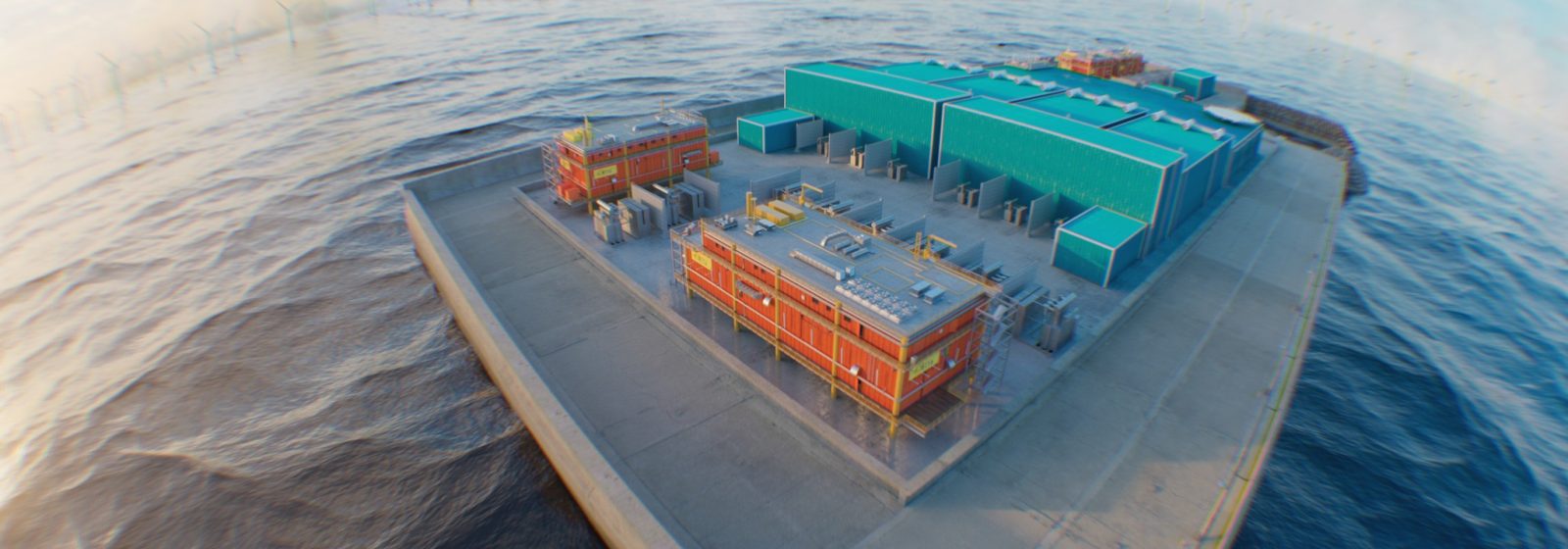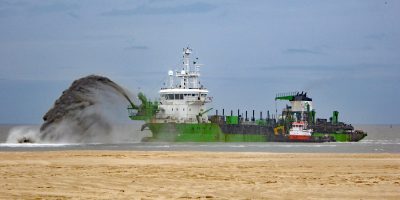
Three consortia, including Belgian companies DEME, Jan De Nul and Smulders, win contracts with a total value of €1.452 billion for the future Princess Elisabeth Island, Belgium’s artificial energy island in the North Sea.
The Princess Elisabeth Island will be the first artificial energy island to combine both direct current (HVDC) and alternating current (HVAC or High Voltage Alternating Current) for international electricity transmission, Elia said in a release. The total capacity of the island will be enough to supply some 3.5 million Belgian households with green power.
Elia Transmission Belgium has now awarded the contracts for the HVAC infrastructure of the Princess Elisabeth Island to two consortia, one consisting of Belgian company DEME and Greek company Hellenic Cables and one consisting of Belgian company Jan De Nul and Korean company LS Cable & System. Both consortia will each lay some 165 kilometres of submarine cables. The contracts are an important step in the realisation of the Princess Elisabeth Island.
DEME
The contract for the Princess Elisabeth Island includes both the design, supply and installation of the submarine high-voltage cables that will connect the energy island to the Belgian mainland electricity grid. DEME will deploy several vessels for the project, including a cable installation vessel, dredgers and jack-up installation vessels. In early June 2024, DEME’s ‘Yellowstone’ was christened in Zeebrugge. That converted bulk carrier can lay down some 37,000 tonnes of rock with great precision up to one and a half kilometres deep.
We are working on the largest inter-array cabling project for Dogger Bank Wind Farm, the largest wind farm in the world
“With the new project, we confirm our leading position in the subsea power cable market,” said DEME CEO Luc Vandenbulcke. “We are working on the largest inter-array cabling project for Dogger Bank Wind Farm – the largest wind farm in the world – and earlier this year won major contracts for IJmuiden Ver Alpha and Nederwiek 1. Our expertise in cable installation, dredging, rock dumping and marine infrastructure works combined with our modern fleet provides customers with an efficient, integrated solution. This is how we support the energy transition and help countries achieve their climate goals.”
The 165-km-long cables will be produced at the Greek Hellenic Cables plant. Transport and installation is planned for 2027. As part of the Belgian consortium TM EDISON, DEME already won the contract to build the island in early 2023. The first of 23 caissons, under construction in the port of Flushing, will be sunk as early as this summer. The caissons serve as the outer walls of the island and will be moved by water from the port of Vlissingen to their final location in the North Sea. The island itself will then be further raised with some 2.3 million m3 of sand, which will be extracted locally.
Jan De Nul
Jan De Nul and Korean company LS Cable & System have won a contract to supply, install and test three alternating current cables of 220 kV each and a combined length of some 165 kilometres. Those cables will transmit renewable energy from Princess Elisabeth Island to the onshore high-voltage grid. Installation is scheduled for 2028.
“We are delighted to have been awarded this pioneering project, which further strengthens Jan De Nul Group’s position as the reference for offshore energy transition construction,” said Wim Dhont, Manager Offshore Cables at Jan De Nul Group. “Thanks to our versatile fleet, we are able to offer a one-stop-shop solution that includes offshore cable laying, dredging, rock protection, civil and environmental work, all with our own equipment and expertise.”
LS Cable is responsible for the design and production of the cables at its plant in South Korea. Jan De Nul Group, with its versatile fleet, will be responsible for transporting, installing and protecting the cables between the island and the Belgian coast. For this, the maritime contractor is deploying cable-laying vessels ‘Connector’, ‘Willem de Vlamingh’ and assistance vessel ‘Adhémar de Saint-Venant’. Its trailing suction hopper dredgers will level the seabed before laying the cables. The two companies thus complement each other in this project after previous collaborations in Germany and the Netherlands.
High-voltage substations
Finally, the contract for the HVAC stations was awarded to the HSI consortium, consisting of Belgian company Iemants (Smulders) and Dutch companies HSM offshore Energy and IV offshore & Energy. HVAC stations, or the offshore high-voltage substation, is the heart of the wind farm where all the energy produced by the wind turbines is collected and converted for transport to the onshore connection.
“The HVAC unit will be the connection point for receiving the first part (2.1 GW) of the electricity produced by the wind farms in the Princess Elisabeth area and for transporting it to the mainland,” Elia explains.
Economic mission to Norway
Energy transition was also one of the central themes during the Belgian Economic Mission to Norway. Norway, Europe’s largest energy supplier, is an important partner for Belgium. The Princess Elisabeth Island, will serve as a connection point between offshore wind farms in the North Sea and the Belgian high-voltage grid. It also offers the possibility of an electricity connection with Norway. This would allow Belgium to supplement Norway’s green electricity production during wind lulls and vice versa.
“On Tuesday 18 June 2024, my Norwegian colleague Terje Aasland and I signed a joint declaration to further support the study of a hybrid interconnector for green electricity exchange between our two countries,” Energy Minister Tinne Van der Straeten said on LinkedIn. “With this joint declaration, Minister Aasland and I reaffirm our commitment to work together to make the North Sea a major renewable energy hub providing green electricity to European citizens.”




